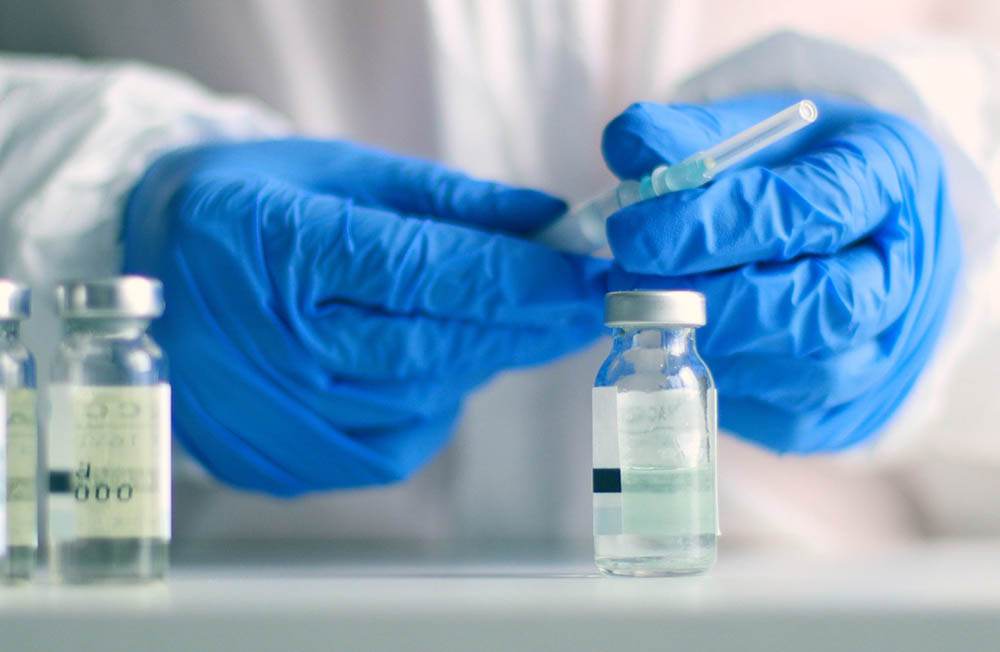Calls for Ukraine
Calls for Europe
Calls for USA

The Moffitt Cancer Center (USA) conducted a basic clinical study of a dendritic cell vaccine targeting the epidermal growth factor receptor 2 (HER2) as an add-on to neoadjuvant therapy for breast cancer. The study involved 30 patients with HER2-positive, ER-negative breast cancer. Vaccination led to a significant increase in immune cell infiltration into tumor tissue and a stronger immune response, which may contribute to more successful treatment.
As breast cancer develops, immune recognition of its key antigens, such as epidermal growth factor receptor 2 (HER2), deteriorates due to immune editing (changes in tumor immunogenicity in response to immune cell attack) and immunosuppression. However, some tumors cause an influx of T cells; in this case, the prognosis is more favorable and the response to preoperative therapy is more effective. The question arises of how to change the microenvironment of immunologically “cold” tumors to improve the recognition of their antigens. For this purpose, “professional” antigen-presenting cells can be used, in particular, type 1 dendritic cells (DC1), which have the ability to cross-present antigens and activate the antitumor response of T cells.
DC1-based vaccines targeting HER2 were previously obtained from the patient’s own dendritic cells, which were isolated from the blood and stimulated in culture with immunogenic HER2 peptides. Such cell vaccines helped overcome tumor immunosuppression and caused regression of early-stage breast cancer. This work was conducted at the University of Pennsylvania under the leadership of Brian Chernetsky, who authored an article presenting the results of a pilot clinical study of the DC1 vaccine against HER2. In this small study, it was used in combination with standard neoadjuvant therapy in women with stage II-III breast cancer that was HER2-positive and estrogen receptor-negative (ER-HER2+).
The study included 30 patients who were divided into three groups (A, B, and C, with 6 people in the first two groups and 18 in the third) and received injections of the DC1 vaccine at a dose of 2×107 cells over a period of three weeks. Group A received injections into the lymph nodes once a week, group B twice a week, and group C two injections a week, one into the tumor and the other into the lymph node. After that, all patients underwent six standard cycles of chemotherapy (ozetaxel/carboplatin/trastuzumab/pertuzumab) every 3 weeks, followed by tumor removal. Before surgery, patients received another dose of the vaccine and three doses after surgery.
The complete pathological response (pCR) rate after completion of neoadjuvant treatment was 64.5% (20 out of 30 patients); in groups A, B, and C, it was 42.8%, 66.6%, and 72.7%, respectively. Several serious adverse events occurred: one case of pulmonary embolism in group B and cases of colitis, appendicitis, and neutropenia in group C.
The number of activated T cells responding to HER2 antigens was measured in blood samples collected throughout the course of therapy using ELISPOT analysis. In groups A and B, which received vaccine injections into the lymph nodes, this indicator increased in the fourth week, decreased as expected during chemotherapy, and increased again after booster doses of the vaccine. In group C, there was no increase in indicators in the fourth week, but an increase was noted after postoperative vaccination. The authors suggest that intratumoral administration of the vaccine may have caused T cells to migrate from the blood to the tumor.
To further study this phenomenon, tumor biopsy samples from patients in group C, obtained before treatment and four weeks after vaccination with dendritic cells, were examined using multiplex immunofluorescence (mIF). Tumor infiltration by stromal immune cells increased significantly as a result of treatment. The most noticeable increase was in the number of effector T cells, NK T cells, which have the properties of both T cells and natural killer cells, as well as lymphocytes producing MHC II and interferon γ. No biopsies were taken during treatment in groups A and B, so it was not possible to assess the effect of intratumoral injection in groups A and B, and no conclusions can be drawn about comparative infiltration in tumor tissues.
Thus, the use of a DC1-based vaccine targeting HER2 in combination with neoadjuvant therapy prior to chemotherapy for breast cancer is safe and potentially effective. Patients showed significant immune activity and a complete pathological response in almost 70% of cases. Intratumoral administration of the vaccine also appears promising, but further studies with higher cell doses are needed, the authors note.
Please rate the work of MedTour
